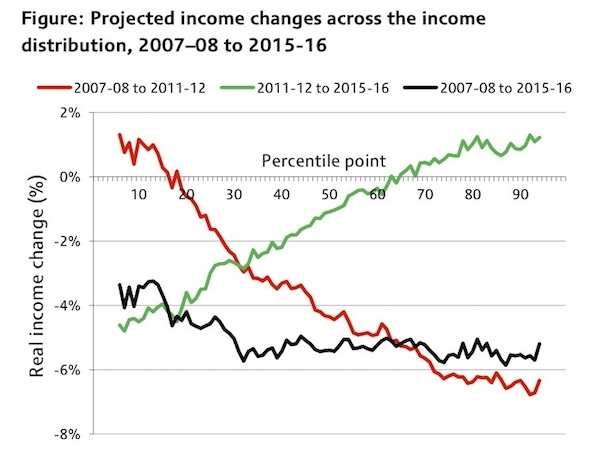
Falls in real earnings hit well-off households particularly hard after the recession, while many poorer households were initially relatively protected by the benefits system, according to a new study.
But poorer households are the hardest hit by the benefit cuts being implemented in the years to 2015-16. The likely net result is that income losses resulting from the recession will be spread quite evenly across income groups.
These are among the key findings of new Institute for Fiscal Studies research published today, in a pre-released article from a special issue of Fiscal Studies to be launched on Wednesday 12th June.
This research provides the first comprehensive estimate of what the distributional impact of the recession will be in the medium term, says the Institute of Fiscal Studies.
{desktop}{/desktop}{mobile}{/mobile}
The main findings include:
• For those on middle and higher incomes, falls in real income happened largely between 2009-10 and 2011-12 because real earnings fell sharply. For example, income at the 90th percentile grew by 8.0% less than the Retail Prices Index (RPI) over those two years.
• For those on lower incomes, more dependent on income from the state, falls in real income will happen largely as a result of welfare cuts that began after the initial recession and are continuing up to and beyond 2015-16.
• Consequently, income inequality fell substantially between 2007-08 and 2011-12, but is projected to rise again from 2011-12, almost (but not quite) reaching its pre-recession level by 2015-16. Overall then, it is the timing of income losses - rather than the magnitude - that varies most strikingly across the income distribution.
• The IFS central projection is that the 10th percentile of household incomes will have increased by 3.4 per cent less than the RPI between 2007-08 and 2015-16, compared to 5.4 per cent at the median (middle) and 5.5 per cent at the 90th percentile.
• The IFS says that in the medium term, falls in income look set to be spread quite evenly across income groups. If anything, incomes will have fallen slightly less towards the bottom than the top.

